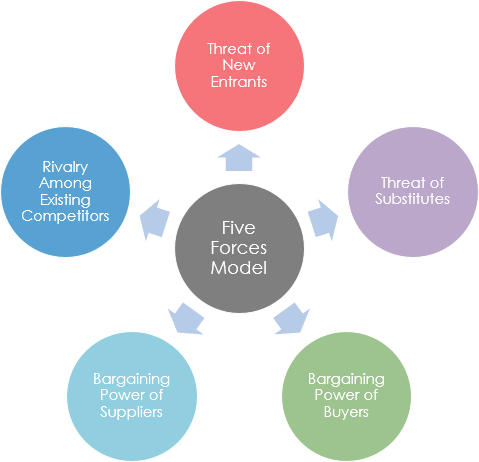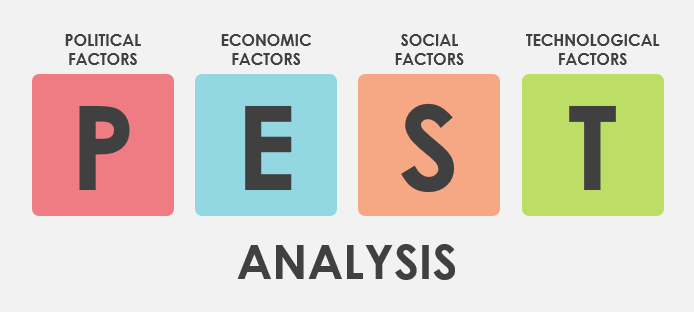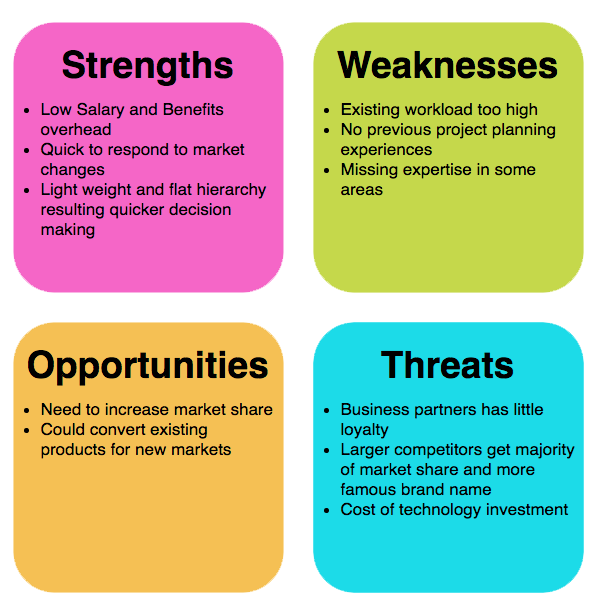Sebuah alat evaluasi bisnis yang kuat untuk perusahaan memahami dinamika kompetitif industri
Analisis industri adalah alat untuk membantu perusahaan memahami posisi mereka relatif terhadap perusahaan lain yang memproduksi produk atau layanan serupa. Ini adalah alat evaluasi pasar yang digunakan oleh perusahaan dan analis untuk memahami dinamika kompetitif industri. Ini membantu mereka memahami apa yang terjadi di dalam industri,
Bagi pengusaha atau perusahaan, analisis industri adalah cara untuk memahami posisi perusahaan relatif terhadap peserta lain di industri. Ini akan membantu mereka mengidentifikasi peluang dan ancaman di masa depan serta memberikan pemahaman yang jelas tentang skenario saat ini dan masa depan industri. Kunci untuk bertahan dalam lingkungan bisnis yang berubah ini adalah memahami perbedaan antara diri Anda dan pesaing industri serta memanfaatkan sepenuhnya perbedaan tersebut.
Tiga Elemen Utama Analisis Industri
Analisis industri mencakup tiga elemen:
- Daya saing dalam suatu industri;
- Faktor-faktor makro-lingkungan; Dan
- Faktor-faktor kunci yang menentukan keberhasilan perusahaan dalam industri.
Ada tiga alat analisis umum untuk melakukan analisis industri yang sesuai dengan tiga elemen utama di atas.
Tiga alat tersebut adalah:
- Lima Kekuatan Porter — Menganalisis daya saing dalam suatu industri
- Analisis PEST — Menganalisis faktor-faktor makro-lingkungan
- Analisis SWOT — Menganalisis faktor-faktor kunci yang menentukan keberhasilan perusahaan dalam industri.
Analisis Lima Kekuatan
Pada tahun 1979, Michael E. Porter dari Harvard Business School mengusulkan analisis Lima Kekuatan posisi kompetitif sebagai kerangka kerja sederhana untuk menilai dan mengevaluasi kekuatan dan posisi kompetitif organisasi bisnis.
Analis strategis sering menggunakan lima kekuatan Porter untuk memahami apakah produk atau layanan baru memiliki potensi keuntungan. Dengan memahami di mana kekuatan berada, teori ini juga dapat digunakan untuk mengidentifikasi area kekuatan, memperbaiki kelemahan, dan menghindari kesalahan.
Apa itu Analisis Lima Kekuatan Porter — Menganalisis daya saing dalam suatu industri
Analisis Lima Kekuatan Porter membuat asumsi kuat bahwa hanya ada lima kekuatan penting yang dapat menentukan kekuatan kompetitif dalam situasi bisnis.

Menggunakan tiga langkah berikut:
- Identifikasi berbagai faktor yang membawa tekanan kompetitif untuk masing-masing dari lima kekuatan seperti yang ditunjukkan pada Gambar di atas:
- Siapa pemasoknya?
- Siapa pelanggannya?
- Apa saja produk pengganti?
- Apakah sulit untuk memasuki industri ini?
- Siapa pesaing utama di industri ini?
2. Berdasarkan faktor-faktor yang diidentifikasi, tentukan apakah tekanannya:
- Kuat
- Sedang
- Lemah
3. Tentukan apakah kekuatan lima kekuatan tersebut menguntungkan untuk mendapatkan keuntungan menarik di industri. Menggunakan model Lima Kekuatan dapat membantu menjawab pertanyaan berikut:
- Apakah keadaan persaingan di industri lebih kuat dari “normal”?
- Bisakah perusahaan di industri ini mengharapkan untuk mendapatkan keuntungan yang layak mengingat kekuatan kompetitif?
- Apakah kekuatan kompetitif cukup kuat untuk merusak profitabilitas industri?
Apa itu Analisis PEST — Menganalisis faktor-faktor makro-lingkungan
Analisis PEST adalah alat yang berguna untuk memahami pertumbuhan atau penurunan pasar, dan dengan demikian posisi, potensi, dan arah untuk sebuah bisnis. PEST adalah akronim untuk faktor Politik, Ekonomi, Sosial, dan Teknologi, yang digunakan untuk menilai pasar untuk sebuah bisnis atau unit organisasi. Terkadang diperluas untuk mencakup faktor hukum dan lingkungan dan disebut analisis PESTLE.

Analisis PEST membimbing kita untuk mengidentifikasi strategi yang efektif untuk menetapkan prioritas, mengalokasikan sumber daya, merencanakan waktu dan peta jalan pengembangan, serta merumuskan mekanisme kontrol. Dengan analisis ini, Anda dapat mengidentifikasi peluang dan ancaman potensial yang terkait dengan strategi Anda dan mencari cara untuk memanfaatkan dan menghindarinya.
Faktor Politik
Ini semua tentang bagaimana dan sejauh mana pemerintah campur tangan dalam ekonomi. Ini dapat mencakup — kebijakan pemerintah, stabilitas atau ketidakstabilan politik di pasar luar negeri, kebijakan perdagangan luar negeri, kebijakan pajak, hukum ketenagakerjaan, hukum lingkungan, pembatasan perdagangan, dan sebagainya.
Jelas dari daftar di atas bahwa faktor politik sering berdampak pada organisasi dan bagaimana mereka menjalankan bisnis. Organisasi perlu mampu merespons undang-undang yang ada dan yang diperkirakan akan datang, serta menyesuaikan kebijakan pemasaran mereka sesuai.
Faktor Ekonomi
Faktor ekonomi memiliki dampak signifikan pada bagaimana sebuah organisasi menjalankan bisnis dan seberapa menguntungkan mereka. Faktor-faktor tersebut mencakup — pertumbuhan ekonomi, suku bunga, nilai tukar, inflasi, pendapatan yang dapat dibelanjakan konsumen dan bisnis, dan sebagainya.
Faktor-faktor ini dapat dibagi lebih lanjut menjadi faktor makro-ekonomi dan mikro-ekonomi. Faktor makro-ekonomi berkaitan dengan pengelolaan permintaan dalam suatu ekonomi tertentu. Pemerintah menggunakan kontrol suku bunga, kebijakan perpajakan, dan pengeluaran pemerintah sebagai mekanisme utama mereka untuk mengelola faktor makro-ekonomi.
Faktor mikro-ekonomi berkaitan dengan cara orang menghabiskan pendapatan mereka. Ini memiliki dampak besar pada organisasi B2C secara khusus.
Faktor Sosial
Juga dikenal sebagai faktor sosio-kultural, faktor sosial adalah area yang melibatkan keyakinan dan sikap bersama dari populasi. Faktor-faktor ini mencakup — pertumbuhan populasi, distribusi usia, kesadaran kesehatan, sikap karir, dan sebagainya. Faktor-faktor ini sangat menarik karena memiliki dampak langsung pada bagaimana pemasar memahami pelanggan dan apa yang mendorong mereka.
Faktor Teknologi
Kita semua tahu betapa cepatnya lanskap teknologi berubah dan bagaimana ini mempengaruhi cara kita memasarkan produk kita. Faktor teknologi mempengaruhi pemasaran dan manajemennya dalam tiga cara yang berbeda:
- Cara baru dalam memproduksi barang dan jasa
- Cara baru dalam mendistribusikan barang dan jasa
- Cara baru dalam berkomunikasi dengan pasar sasaran
Menganalisis faktor-faktor ini akan membantu Anda dan tim Anda mendapatkan pemahaman yang komprehensif tentang faktor eksternal (makro lingkungan) yang dapat mempengaruhi proses perencanaan strategis perusahaan Anda secara positif atau negatif. Dengan akses ke pengetahuan tersebut, Anda dapat dengan cepat merumuskan strategi yang akan menempatkan perusahaan pada jalur cepat untuk mencapai tujuannya.
Analisis SWOT — Menganalisis faktor-faktor kunci yang menentukan keberhasilan perusahaan di industri.
Analisis SWOT adalah teknik yang dikembangkan di Stanford pada tahun 1970-an, sering digunakan dalamperencanaan strategis. SWOT adalah akronim untukKekuatan,Kelemahan,Peluang, danKeancaman dan merupakan metode perencanaan terstruktur yang mengevaluasi keempat elemen tersebut dari sebuah organisasi, proyek, atau usaha bisnis. Analisis SWOT adalah kerangka kerja yang sederhana, tetapi kuat, untuk memanfaatkan kekuatan organisasi, memperbaiki kelemahan, meminimalkan ancaman, dan mengambil keuntungan sebesar-besarnya dari peluang.

Konsep Dasar Analisis SWOT
Analisis SWOT akan membantu Anda memahami posisi perusahaan yang akan mendorong ide dan pengambilan keputusan tentang bagaimana membangun kekuatan, memanfaatkan peluang, meminimalkan kelemahan, dan melindungi dari ancaman. Berikut adalah empat manfaat menggunakan analisis SWOT untuk bisnis Anda:
- Identifikasi Kompetensi Inti — Ini memberikan pandangan yang jelas tentang kompetensi inti Anda, dan memungkinkan Anda untuk membangunnya untuk mencapai tujuan bisnis Anda
- Identifikasi Kelemahan — Mengenali kelemahan perusahaan Anda adalah salah satu langkah pertama untuk memperbaiki bisnis Anda. Ini mengungkapkan kelemahan Anda dan memberikan kesempatan untuk membalikkan mereka
- Jelajahi Peluang — Ini membantu Anda menjelajahi peluang yang ada di depan. Menggunakan ini Anda dapat merancang rencana pertumbuhan strategis Anda berdasarkan kekuatan dan kelemahan Anda
- Kenali Ancaman Potensial — Ini membantu Anda menganalisis kemungkinan ancaman terhadap bisnis Anda, dan Anda dapat kemudian membuat perubahan yang diperlukan pada kebijakan bisnis dan tindakan yang diperlukan. Selain itu, ini memfasilitasi pembuatan rencana tambahan atau alternatif, rencana kontinjensi, dan sebagainya.
Saat Anda menggunakan Analisis SWOT untuk perencanaan, Anda menyelaraskan elemen positif untuk membantu memanfaatkan peluang dan mengidentifikasi celah dalam elemen negatif yang harus diperbaiki atau dikelola. Mengambil implikasi dari SWOT mengharuskan kita untuk melakukan lompatan strategis, melihat hubungan di seluruh kategori (misalnya, di mana kekuatan membantu kita mengurangi ancaman), serta melihat secara holistik untuk tren.
Kesimpulan
Analisis industri membantu perusahaan memahami situasi pasar yang mengungkapkan daya saing industri dan biaya yang terkait dengan masuk dan keluar dari industri. Ini sangat berguna saat merencanakan startup dan usaha kecil.
Analisis industri yang komprehensif dapat membantu pemilik usaha kecil merumuskan strategi yang efektif dan memanfaatkan sumber daya terbatas dari usaha kecil dengan sebaik-baiknya. Ini membantu untuk menentukan tahap mana industri saat ini berada; Apakah masih tumbuh, apakah ada ruang untuk pendapatan, atau apakah sudah mencapai titik jenuh.
Artikel Analisis Strategis Lainnya
- Analisis Strategis dengan PESTLE & Lima Kekuatan Porter
- Memanfaatkan Berbagai Alat Analisis Strategis
- Alat SWOT, PEST, dan Rantai Nilai Terbaik
- Template Analisis Lima Kekuatan
- Template Grafik PEST
- Set Alat Strategi Terbaik untuk Mendapatkan Keunggulan Kompetitif
- Apa itu analisis lima kekuatan?
- Memanfaatkan berbagai alat analisis strategis
This post is also available in Deutsch, English, Español, فارسی, Français, 日本語, Polski, Portuguese, Ру́сский, Việt Nam, 简体中文 and 繁體中文.













